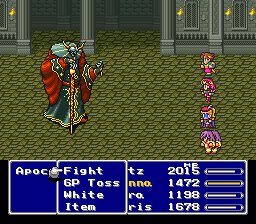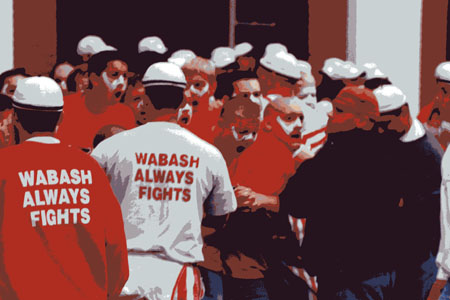The End Times
The End Times were certainly a topic on everyone's mind at Qumran, but no one was scared or worried. The teacher of Righteousness had already figured out how the world was going to end, and someone wrote up his prescriptions in a text known as the war scroll. The War Scroll lays out how the final battle for the universe between the Sons of Light and the Sons of Darkness would be organized, from its inception with a pre-emptive attack by the Sons of Light to its denoument when the loyal and righteous are given their eternal reward.
The ultimate war was to last for forty years. After the first six years of offensives against the evil ones, there would be a sabbath wherein Temple worship would be established again, bringing more of the Jewish community into the Essene's brand of true Judaism, with ultimate regard for the Torah's laws and the divine interpretations of the Teacher of Righteousness. From the War Scroll:
| All those who cleave to the mysteries of sin shall be no more; knnowledge shall fill the world and folly shall exist no longer. |
The battle would begin when the foreigners would be expelled from the Holy Land. The Essenes were quite tickled with the notion of having only spiritually enobled Jews roaming around Judea. The Sons of Light, organized by twelve tribes into ranks of tens, hundreds, and thousands. The golden shields and golden trumpets would all have names and titles engraved in them, embuing them with divine power. A particularly salient number is three. The battle tactics, which Geza Vermes feels reflect Roman rather than Greek battle arrangements, are alighned with the number three in mind. For instance, when the four Towers (one with and Archangel's name inscribed on it) are employed they will be protected on three sides by three rows footsoldiers, like sharks teeth.
|
Both the forces of God and the depraved servants of Belial were to be evenly matched, |
 |
boldly facing down the apocalypse and the dark maste, Melkiresha, themselves, (artists rendition) |
with each side calling upon celestial and supra-natural help such as angels and demons. The battle would be undecidable if God himself wouldn't tilt the balance in favor of the Sons of Light, utterly obliterating the nefarious hordes of the impure and unfaithful. According to the essenes, Satans real name was Melkiresha. Maybe he changed it when he got famous.
The Wabash end times were a little more difficult to discern, although we are certain that the Sons of Darkness resided in a veritable den of iniquity twenty miles to the south in a realm once known as Greencastle. No student was allowed to speak the name of that despicable blight against the face of God upon fear of excommunication, though all knew its name. The Wabash community also expected that God would move against the residents of Depauw University and their dark master Koh'ed. The Wabash Community knew God was on their side when God struck down one of Belial's towers during early April, 2002. Unfortunately, some ignorant and uninvolved students lost out in Gods wrath. He never apologized.
Link to article about Depauw's fireand donate here:
Rector Fire Fund for Student Relief
The University has established a special fund to assist students who have
lost personal items in the fire. Those wishing to contribute can make checks
payable to DePauw University. Please include Rector Fire Fund for Student
Relief on the memo line of the check. Checks should be mailed to DePauw University
Office of Student Affairs 408 South Locust Street
Greencastle, IN 46135:
|
But remember, you're going against the will of God. |
 |
Wabash Teacher of Righteousness was symbolically regarded as the diembodied (but well dressed) head of a man. His name Eli Li'lee is a blatant corruption of the Hebrew word for lord - Elohim. The head of the Teacher of Righteousness guarded the campus library so that students could reflect on the divine message every day that they went to study their four hours in the House of Holy Texts.
The Wabash Community would practice once a year, around harvest time, this final battle. The campus' tribes were arranged by living unit, into twelve groups: the 10 fraternities, the independents tribe, and the faculty caste who would perform all the priestly functions. Since they would gather in front of the campus temple they called this even Chapel Scream. Each tribe would go through the required motions, preparing for God's call, and calling up into heaven the sacred hymn as loudly as they could in the hope of rousing God's holy host for battle. Their color, red, symbolic of ritual sacrifice to the lord, was also a paean to battle.
